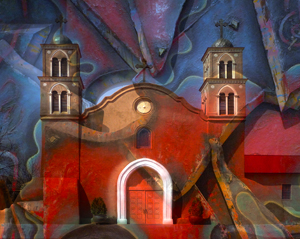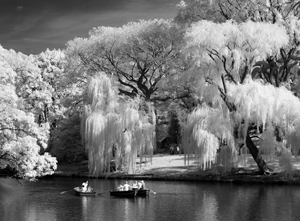How to be More Creative – Photographer Gail Dohrmann
How to be More Creative: Interview with Photographer Gail Dohrmann, Boulder, Co.
By Janice Wood Wetzel
Photographers Gail Dohrmann and her husband, Russ, live in a beautiful location in Boulder, Colorado. There are many natural areas to photograph, but they feel photographing those same subjects over time begs for more. Gail and Russ together have had two books published, one on hiking trails in Boulder, and the other Boulder’s Favorite Places, which is now sold out. Gail has been in juried shows and a solo exhibit of her infrared work at the National Center of Atmospheric Research. She has had two articles published in After Capture Magazine, plus a couple of images in Color Magazine last year. The couple plans to incorporate their creativity presentation into a book. I was impressed by their presentation on sparking creativity when I saw it on a photo tour in Morocco. I asked Gail to share it with our IMPRINTS readers and she has graciously agreed. Janice Wood Wetzel
JWW: What motivated you and your husband to develop your creativity presentation?
GD: Russ and I have participated in photo clubs for a long period of time. Competing every month has helped us create a large body of work, but over time it seemed that we were stuck in a rut. One judge recently judged every work according to the black and white values, whether they were blocked or blown out. I thought to myself, “That’s like judging a novel based on its punctuation.€ We decided to create a program for our club that demonstrated how we got ideas and how rules could be broken for creative effect, using our images as examples.
JWW: Why do you suppose we get blocked? What are we afraid of?
GD: I do experience creative blocks from time to time. I see that creativity goes in spurts of frenetic activity followed by the question, “Now what?€ I don’t like to repeat myself endlessly, and when all the photos start to look alike, that’s when I try to change gears. I keep an idea file to turn to for inspiration. But my best way to get off the block is just to page through my original images until one grabs me. Then I might try 5 or 6 different techniques until I like what I see. I subscribe to many photographic publications which also give me many ideas and act as stimulus for my imagination. The key is not to edit too much too soon, or to turn on the critical inside voice too early. Experimentation is the key. I like to create manipulated images as it thrills me to take an ordinary photo and transform it to something more original.
Perhaps the reason we have a “comfort zone€ is that while in it, we don’t have to face up to the fears: for example, fears of photographing people on the street or using complicated lighting, or not knowing what we are doing.
JWW: How can we overcome our fears?
GD: Action! Constant creation of work. Winning contests or getting published does a lot to calm the critical voices in our own head. Submit monthly to contests and magazines. Get your images into the marketplace where they can be seen.
Also, nobody can create salable images time after time without doing post-processing work; my advice is to learn Photoshop or Lightroom, taking classes or teaching yourself.
JWW: How important is it to develop a personal photographic style?
GD: I think style is an important element of any photograph–it’s what makes it seem special and unique. It helps grab attention and distinguish the photograph from the ordinary. Sometimes photographic styles are trendy and become passé after a short time. A personal style where your images are recognizable as yours, is something more profound and more difficult to accomplish, requiring years to develop fully as its essential ingredient is originality. When participating in a solo exhibit, I do think all the images should be related to an overall theme and should be consistent in style.
JWW: What noted or notable photographers inspire you personally?
GD: I love the whimsical surrealism of Maggie Taylor and the elegant surrealism of her husband Jerry Uelsmann. One of my favorite books is “Photo Impressionism€ by Freeman Patterson and Andre Gallant. I have just ordered “Expressionism€ (his new book) from Andre Gallant. I am friends with Jerry Downs on Facebook giving me a wonderful image to see each day (he’s great!) .
John Paul Caponigro has a very intellectual website with much to contemplate about the creative process. Some photographers still think it is immoral (no kidding) to manipulate a photograph. (Aren’t they out of date?)To shouts of, “You can’t do that!€ he answers ,“I just did!€ He says to be open and honest about what you do, but do it.
JWW: How can we become more creative?
GD: The creative person looks for possible photographic subjects in a critical way, not just seeing the object or person literally, but in terms of light and shadow, line and form, and feeling something for what she sees. Emotion is one of the most important ingredients of a photographic image. When a photographer loves something about what she sees, that emotion is transferred to the viewer. One method of sparking your creativity is to go to museums and look for paintings that move you. Then try to replicate the painting in a photograph.
Creative techniques are as simple as these: convert color images to black and white, add texture or an overlay, use creative filters like the new pixel bender I just tried out yesterday, as well as Nik Color Efex Pro, Topaz Adjust 4, and onOne. Combine images into collages or montages, use vignettes and edges creatively, add wild colors, take shots of mundane subjects, try a variety of styles like grunge, pop art, fine art. Try antique photos and selective focus. Photograph everywhere–the coffee shop, the museum, the laundromat, from your front windshield, the jogging trail, the mall, abandoned urban sites. High tech and low tech, use your mobile phone and try to get a winner. Think about technical expertise–yes, professional portraits require it–but low tech leads to spontaneity and energy and funkiness.
JWW: Thanks for your inspiration Gail. I know your suggestions and photographs inspire me. I trust that they will our readers as well.




